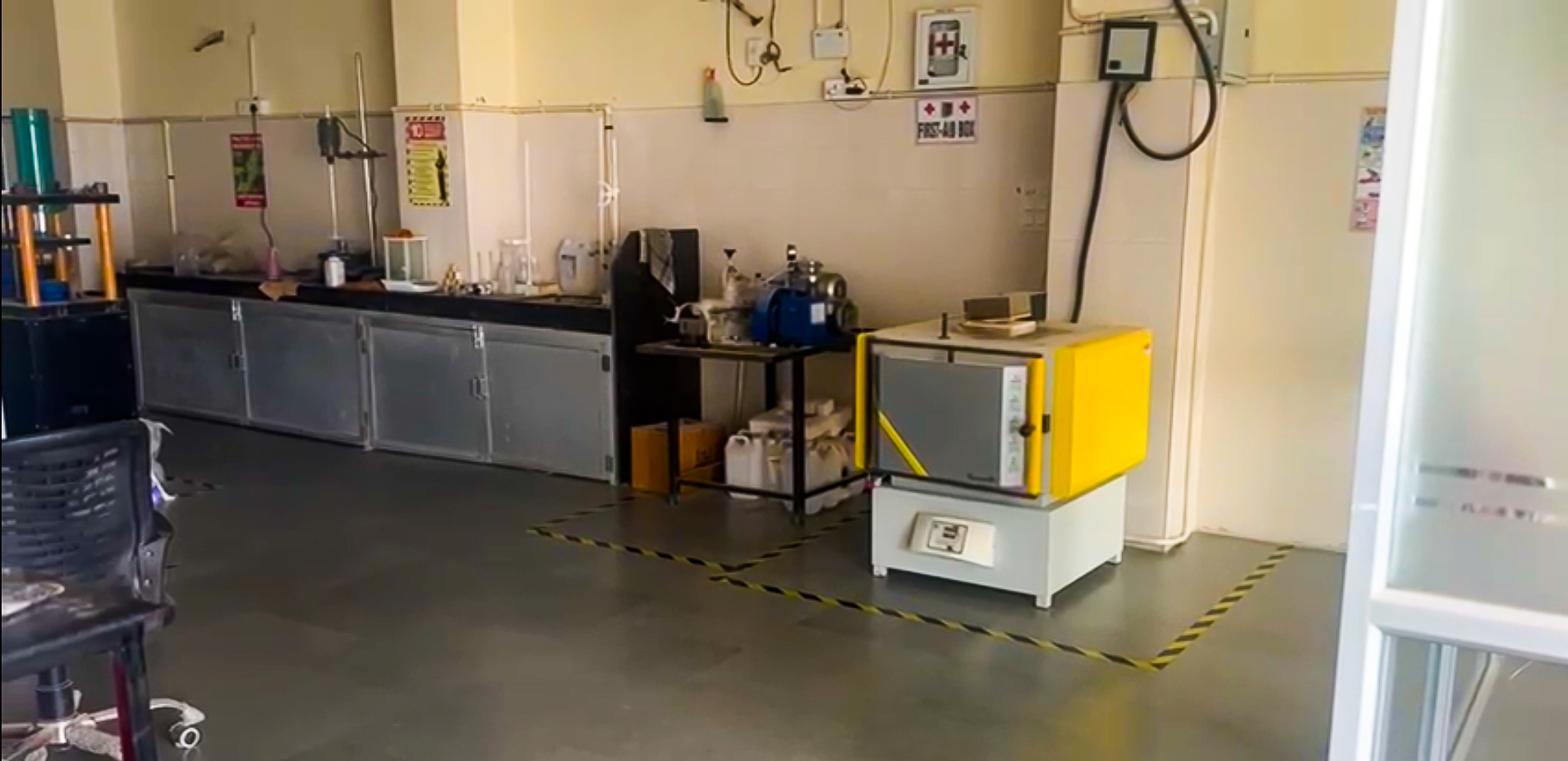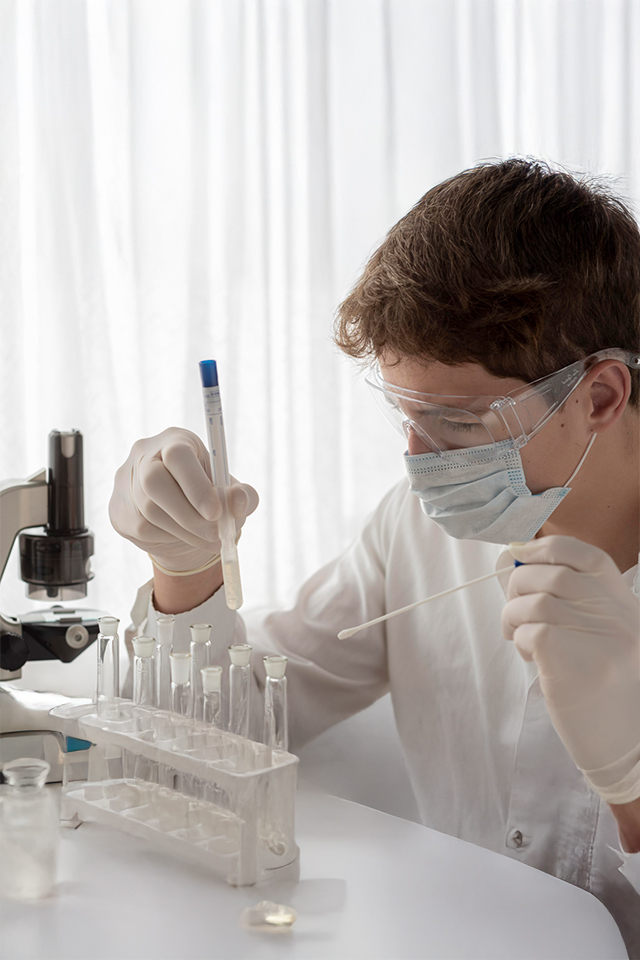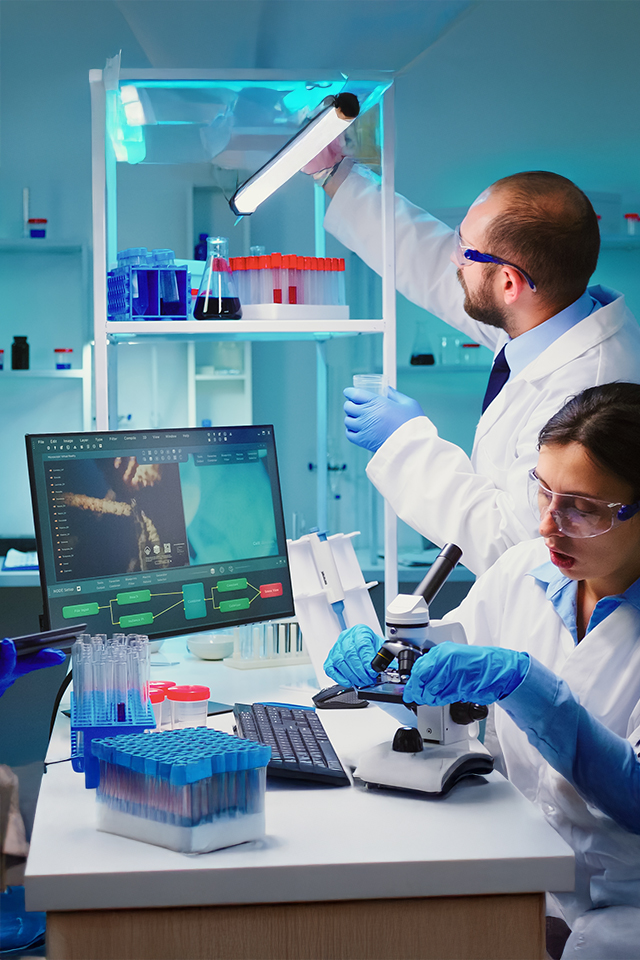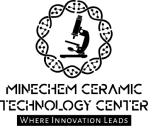Cal Central Analytical Laboratory
The Cal Central Analytical Laboratory at Minechem Ceramic Technology Center plays a crucial role in supporting our R&D and production processes. Equipped with the latest technology and staffed by experienced professionals, the laboratory is dedicated to providing precise, reliable, and efficient analysis of raw materials, formulations, and finished products. We conduct a wide range of tests to ensure that our products meet the highest quality standards and comply with industry specifications.
Our laboratory serves as a vital resource for both internal and client testing needs, offering a comprehensive suite of analytical services. Whether it’s evaluating the chemical composition of materials or conducting performance-based tests, we ensure that every product meets the exact requirements for optimal performance, safety, and sustainability.

Comprehensive Services at Cal Central Analytical Laboratory
The Cal Central Analytical Laboratory at Minechem Ceramic Technology Center is at the heart of our commitment to excellence in product quality and performance. Our laboratory provides comprehensive analytical services that are integral to our formulation development and quality assurance processes. With state-of-the-art equipment and a skilled team of experts, we conduct a variety of tests to ensure that raw materials and finished products meet the most stringent quality standards.
From the evaluation of chemical composition to the testing of physical properties, our laboratory delivers precise and accurate results. We work closely with our clients to offer customized testing solutions, providing valuable insights that drive continuous improvement in product development. Our analytical services also support the certification of our products, ensuring they comply with industry regulations and standards.
Below are the six essential steps of the analytical process we follow in our laboratory to ensure the highest level of quality and performance in every product.
01. Sample Collection and Preparation
- The first step in the analytical process involves the careful collection and preparation of samples.
- Proper sample collection is essential for accurate testing.
- Our team follows strict protocols to ensure samples are representative of the batch or material being tested.
- Sample size, handling, and storage conditions are all carefully considered.
- Measures are taken to prevent contamination or alterations during the collection process.
- Once collected, the sample is prepared for analysis using methods such as grinding, homogenizing, or other modifications based on specific test requirements.
- This step ensures the sample is in the best possible condition for accurate and reproducible results.


02. Chemical Composition Analysis
- The next step is to analyze the chemical composition of the sample.
- Advanced techniques like X-ray fluorescence (XRF) and Inductively Coupled Plasma (ICP) analysis are used.
- These techniques help determine the concentration of key elements and compounds in the material.
- This step is crucial for evaluating purity, assessing suitability, and ensuring consistency in raw materials used for formulation development and production.
- The benefits of chemical analysis include informed decisions about material quality and performance.
- Detailed chemical analysis reports provide valuable insights for process optimization.
- This ensures the highest standards of quality are maintained throughout the production process.
03. Physical Properties Testing
- Physical properties testing is performed to evaluate the material’s behavior under various conditions.
- Tests include particle size measurements, density assessment, shrinkage evaluation, water absorption testing, and plasticity measurements.
- These tests help understand how materials will perform during manufacturing and firing processes.
- High-temperature behavior assessment ensures materials meet necessary requirements for ceramics and high-performance applications.
- Advanced equipment is used for precise measurements.
- Benefits for clients include optimization of formulations, improved processing, and enhanced product quality and durability.


04. Firing Behavior and Thermal Analysis
- Firing behavior and thermal analysis are critical components of our analytical services.
- This step involves evaluating how materials respond to high temperatures during firing.
- We assess thermal stability, shrinkage, and expansion.
- Techniques used include Differential Thermal Analysis (DTA) and Thermal Gravimetric Analysis (TGA).
- Benefits of understanding firing behavior include identifying the ideal firing temperature and cycle, detecting potential issues during production, and ensuring products meet quality standards for ceramics, sanitaryware, and tile applications.
- This process also improves the durability and performance of the final products.
05. Performance Testing
- Our performance testing evaluates the material’s performance in real-world conditions.
- Types of tests may include mechanical testing (strength, hardness, flexibility, resistance to wear), thermal shock resistance, and moisture absorption testing.
- Benefits of performance testing include providing insights into how well materials will perform in their final applications and ensuring the final product meets durability and functionality standards.
- Our laboratory tailors tests to meet specific client needs, ensuring results are directly applicable to the client’s manufacturing process.


06. Final Reporting and Consultation
- After completing all necessary tests and analysis, we provide a comprehensive report.
- Our reports include detailed data on chemical composition, physical properties, firing behavior, and performance tests.
- These reports serve as valuable tools for making informed decisions regarding materials and formulations.
- Our team offers consultation services to interpret the results of tests and analysis, suggest improvements or adjustments to formulations and processes, and work closely with clients to ensure full understanding and effective application of laboratory findings.
